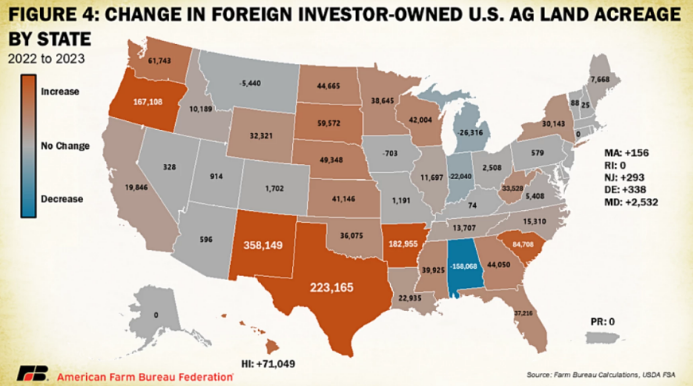By Ryan Hanrahan
Bloomberg’s Kim Chipman reported Thursday that “US farmers are poised to see a smaller-than-expected drop in income this year, down only 4.4% from 2023 even as prices of corn and soybeans — America’s two biggest crops — have plummeted.”
“Growers are expected to see overall earnings of $140 billion, not including adjustments for inflation, according to the latest forecast from the US Department of Agriculture. The outlook is much rosier than the net farm income drop of 26% to $116.1 billion estimated by the agency in February,” Chipman reported. “…If the new estimate is realized, it will be 15% above the 20-year average of $121.5 billion, though 28% below the 2022 record in inflation-adjusted dollars, the USDA said on Thursday.”

Agri-Pulse’s Philip Brasher reported that “net cash farm income, which more closely tracks farmers’ cash flow, is forecast at $154.2 billion. When adjusted for inflation, that would be a decline of 9.6%, or $16.3 billion, from 2023 and 6.2% above the 20-year average.”
“Net cash farm income is based on cash receipts from farming, plus government payments and other farm-related income, minus cash expenses. Net farm income also factors in depreciation and changes in inventory values,” Brasher reported. “USDA’s February forecast had projected net farm income at $116.1 million this year, or 1.7% below the 20-year average when adjusted for inflation. Net cash farm income was projected to decline 25.8%, or $42.2 billion, in 2024.”
“But ERS raised its estimates for sales from agricultural commodities. USDA still estimates commodity cash receipts will decline by $9.8 billion this year, but the February forecast projected they would drop by $21 billion,” Brasher reported. “Total receipts from crops are still expected to drop by $27.7 billion, or 10%, led by falling prices for corn and soybeans, but sales of animals and animal products are expected to increase by $17.8 billion, or 7.1%, ‘following increases in receipts for eggs, cattle/calves, milk, and broilers,’ ERS says. The February forecast estimated animal and animal product receipts would drop $4.6 billion.”
Chipman reported that “another reason for the higher forecast is a decline in the cost of essential farm inputs, most notably animal feed, fertilizer and pesticide, Carrie Litkowski, an economist at the USDA’s Economic Research Service, said in a live-streamed discussion after the release of the forecast. American farmers have also been turning more thrifty, cutting back on everything from fertilizer to equipment, as ample crop supplies and weak demand have pushed grain prices to the lowest levels in four years.”
Agriculture Secretary Tom Vilsack said in a press release Thursday that “today’s farm sector income forecast shows that, while the projection shows a decline from the 2022 record high, 2024 is expected to close out a four-year streak of net farm income that’s above the 20-year average. For the prior four years, net farm income was consistently at or below that historic average, even before the COVID-19 pandemic.”
Farm Bureau Remains Concerned About Decline
The Des Moines Register’s Donnelle Eller reported that “Farm Bureau President Zippy Duvall said in a statement that the declining farm income highlights Congress’ need to hammer out a new farm bill that provides farmers with an income safety net and conservation funding, among several other services.”
“‘The drop in net farm income is not just an economic hiccup, it’s evidence of an agricultural downturn,’ Duvall said,” according to Eller’s reporting. “‘High inflation, severe weather and plummeting crop prices should serve as a wake-up call for Congress to finally step up and do the right thing by modernizing the farm bill.'”
Source : illinois.edu